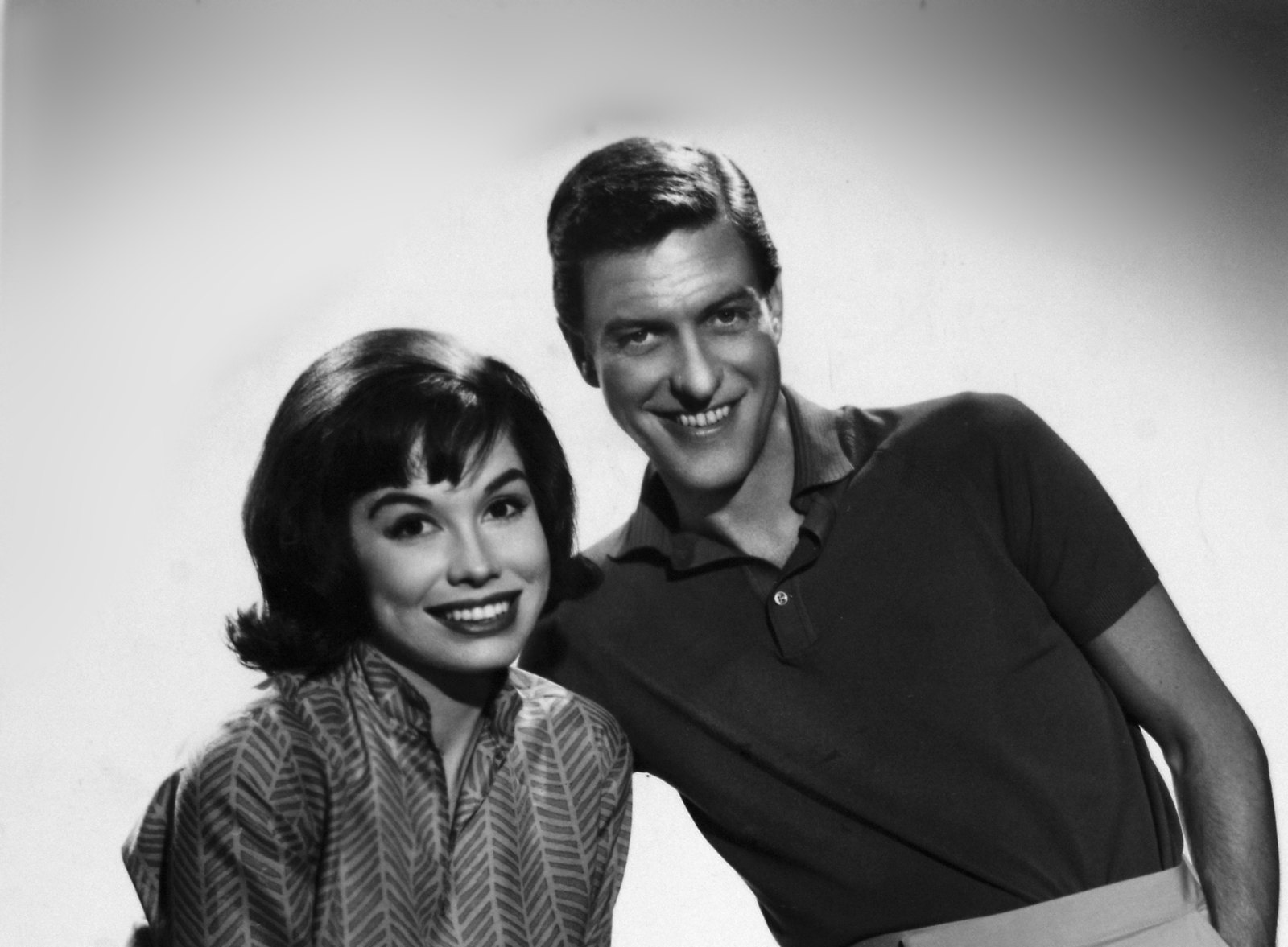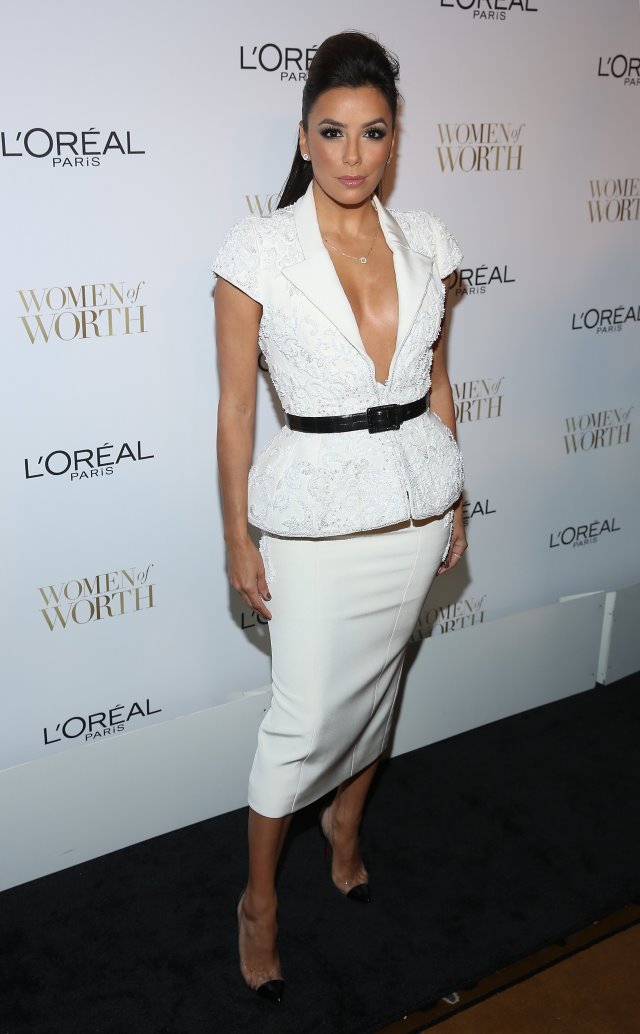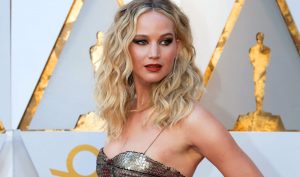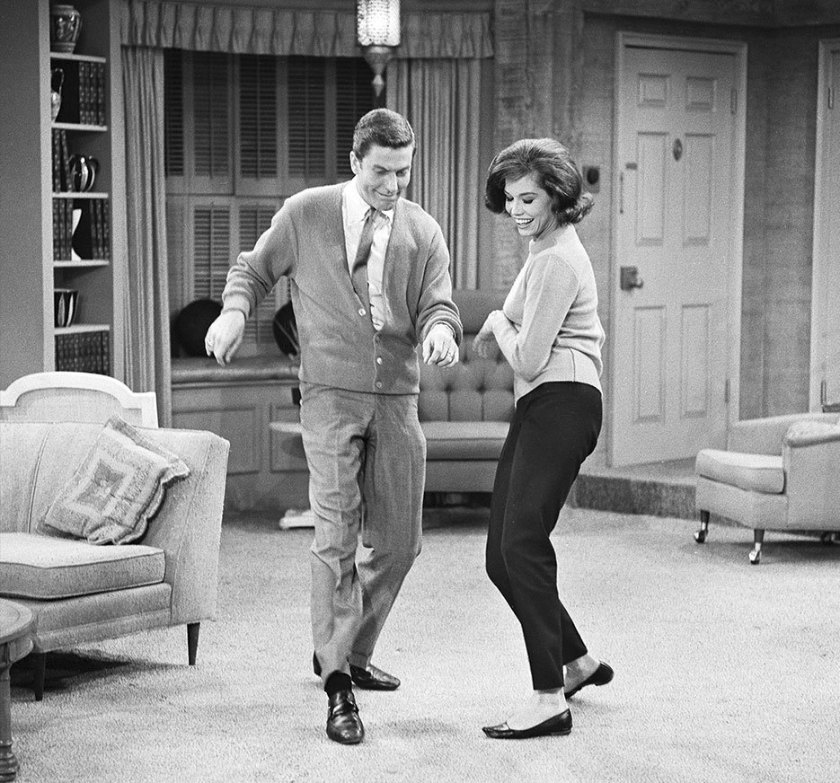
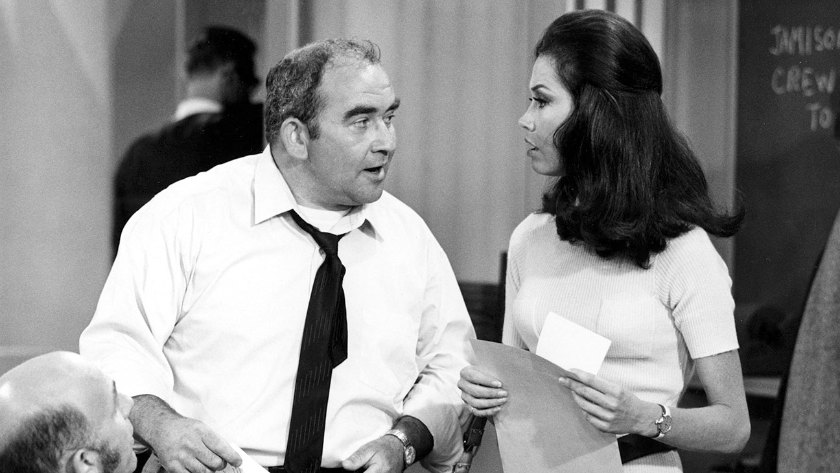
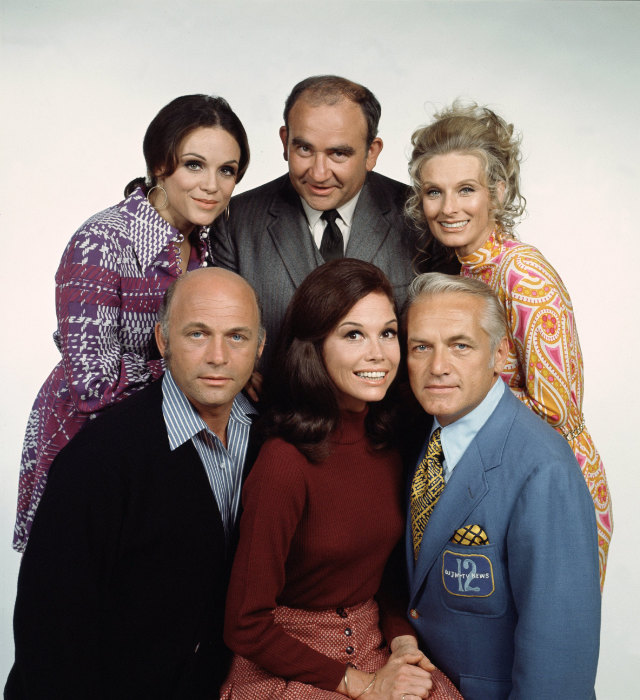
The two Camelots: the Petries’ living room was the hippest fictional place to be in the early 1960s, with Dick van Dyke and Mary Tyler Moore as Rob and Laura Petrie in The Dick Van Dyke Show. Ed Asner with Moore in the pilot episode of The Mary Tyler Moore Show—not the first take. The original first-season cast of The Mary Tyler Moore Show, clockwise from top left: Valerie Harper, Ed Asner, Cloris Leachman, Ted Baxter, Mary Tyler Moore, and Gavin MacLeod.
Mary Tyler Moore, the multi-Emmy-winning star and Oscar-nominated actress, died aged 80 on Wednesday in Greenwich, Connecticut.
Publicist Mara Buxbaum issued the following statement: ‘Today, beloved icon, Mary Tyler Moore, passed away at the age of 80 in the company of friends and her loving husband of over 33 years, Dr S. Robert Levine. A ground-breaking actress, producer, and passionate advocate for the Juvenile Diabetes Research Foundation, Mary will be remembered as a fearless visionary who turned the world on with her smile.’
Moore was born in Brooklyn, New York, on December 29, 1936. At 17, she wanted to be a dancer, with her dance training evident in one of the first roles that brought her national attention: the Happy Hotpoint elf, who danced across the screen as the mascot for Hotpoint appliances. She had a small role in Richard Diamond, Private Detective, and she guest-starred in numerous other TV shows.
However, in 1961, Moore hit the big time when Carl Reiner cast her in The Dick Van Dyke Show. Moore saw herself as an aspiring dramatic actress, but found herself one of the most gifted comedic artists of her generation. It was Reiner’s second attempt at making the series (which he originally wrote for himself to star in), produced by Danny Thomas’s company. Thomas himself remembered Moore from an earlier role and recommended her to play opposite star Dick van Dyke as his screen wife.
Despite an age gap between herself and van Dyke of 11 years, the two actors hit it off, and both have said since that they had crushes on each other. Her role was meant to have been a smaller one—effectively the straight man to van Dyke’s Rob Petrie character when he came home from the office—but recognizing her talents, her role began to expand.
After a rocky first season that saw producer Sheldon Leonard approach sponsors to save the show, The Dick Van Dyke Show took off for its second season in 1962, and never looked back.
The show was regarded as ground-breaking for showing a modern, white American couple in the suburbs, and Moore herself—as a young mother—wore capri pants as Laura Petrie, which brought her much attention, as well as complaints from less tolerant viewers. Moore’s catchphrase, ‘Ooh, Rob,’ became linked to her. She won two Emmys for her role as Laura Petrie, from three nominations.
Van Dyke shared the clip below via Twitter on hearing of Moore’s death.
Many of the key people on the show wanted to do other things—van Dyke had the beginnings of a movie career—and The Dick Van Dyke Show ended its run in 1966, on a high. Moore had numerous smaller roles, including one as a nun in the Elvis Presley starrer Change of Habit, but audiences still associated her with the Laura Petrie character. After appearing on a one-off van Dyke TV special, Moore and second husband Grant Tinker pitched a new sitcom to CBS.
CBS effectively approved the sitcom based on Moore’s star power, though there were many road blocks in getting The Mary Tyler Moore Show made, as recounted in 2013 by Jennifer Keishin Armstrong in her book, Mary and Lou and Rhoda and Ted and All the Brilliant Minds Who Made The Mary Tyler Moore Show a Classic. The network had expected the show to be a flop, an early cut of the pilot didn’t find favour, and even co-star Ed Asner almost didn’t get his Lou Grant role, one that he is best known for. However, Moore, Tinker, and the team persisted, and The Mary Tyler Moore Show was one of the 1970s’ most acclaimed sitcoms, earning Moore four Emmy wins from eight nominations.
The Mary Tyler Moore Show was, on the surface, an urban show that marked the dawn of the 1970s, after an era of rural-themed sitcoms such as The Beverly Hillbillies. But it was unheard of to show a young, single woman in her 30s forging a career and her own path in life. The show still stands up to scrutiny today for its writing and pace. Producers James L. Brooks and Allan Burns were committed to show a slice of reality—Moore could be seen repeating outfits during a season as a real working woman would—and to get a woman’s point of view, the show wound up hiring numerous female writers. It was implied in one episode that the fictional Mary Richards had stayed over a boyfriend’s, and another that she was on the Pill—both elicited viewer complaints at the time. The Mary Tyler Moore Show tapped into the US’s conscience, with the growing women’s movement. It also spawned imitators, including the short-lived sitcom Diana, with Diana Rigg, and the similarly short-lived Bewitched sequel, Tabitha. Behind all seven seasons were Moore and Tinker, who had formed their own production company, MTM Productions, Inc. MTM went on to produce numerous other shows, including spin-offs Rhoda, Phyllis and Lou Grant, as well as The Bob Newhart Show, WKRP in Cincinnati, Hill Street Blues, St Elsewhere, Remington Steele and The Pretender.
Moore considered herself lucky to have been involved in ‘two Camelots’: two series that had broken ground in their respective times. While continuing to remain active on stage and screen, few projects were as well connected to Moore in the public mind. Moore did receive an Oscar nomination for her role in Ordinary People (1980) as a mother grieving the death of one of her sons—a situation that had a tragic parallel that year as Moore’s son, Richie, by her first husband Richard Meeker, accidentally shot himself in an accident.
Moore and Tinker divorced in 1981, and she married her third husband, Dr S. Robert Levine, in 1983.
Later projects included telemovie sequels to both The Mary Tyler Moore Show (Mary and Rhoda, released in 2000—and never had the spark of the original) and The Dick Van Dyke Show (2004, written by creator Carl Reiner and called its 159th episode). As covered in Lucire in 2012, van Dyke presented her with a SAG lifetime achievement award.
Moore was diagnosed with Type 1 diabetes in her 30s and was an active campaigner for the JDRF, formerly the Juvenile Diabetes Research Foundation. She was also an animal rights’ activist and a vegetarian.—Jack Yan, Publisher, with Nathalia Archila
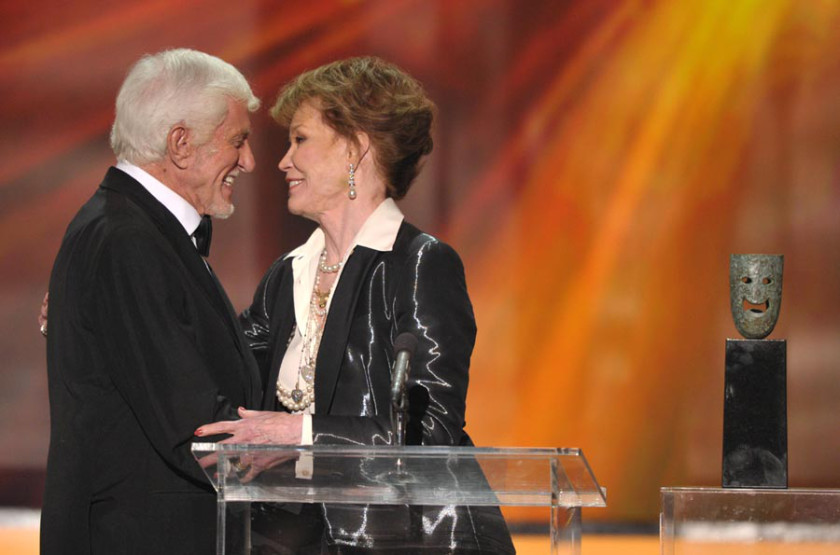
John Shearer/WireImage
Above: Mary Tyler Moore receives a lifetime achievement award from former co-star Dick van Dyke.
Chanel shows off spring–summer 2017 haute couture, with Lily-Rose Depp as the bride
Mary Tyler Moore’s most famous TV shows altered lives for the better
Mary Tyler Moore, ground-breaking actress and diabetes campaigner, dies aged 80
News
She was known for her roles in The Dick Van Dyke Show and The Mary Tyler Moore Show. Mary Tyler Moore, actress, diabetes campaigner, animal rights’ activist, dies aged 80 in Greenwich, Connecticut
January 26, 2017/0.38
She was known for her roles in The Dick Van Dyke Show and The Mary Tyler Moore Show. Mary Tyler Moore, actress, diabetes campaigner, animal rights’ activist, dies aged 80 in Greenwich, Connecticut
January 26, 2017/0.38
Categories
celebrity / culture / entertainment / film / living / Lucire / modelling / New York / society / TV
Filed by Jack Yan
celebrity / culture / entertainment / film / living / Lucire / modelling / New York / society / TV
Filed by Jack Yan

